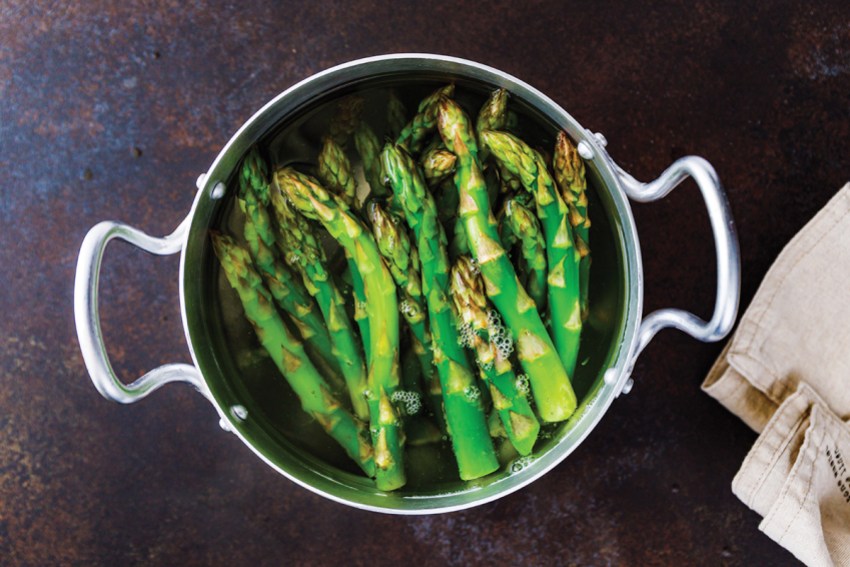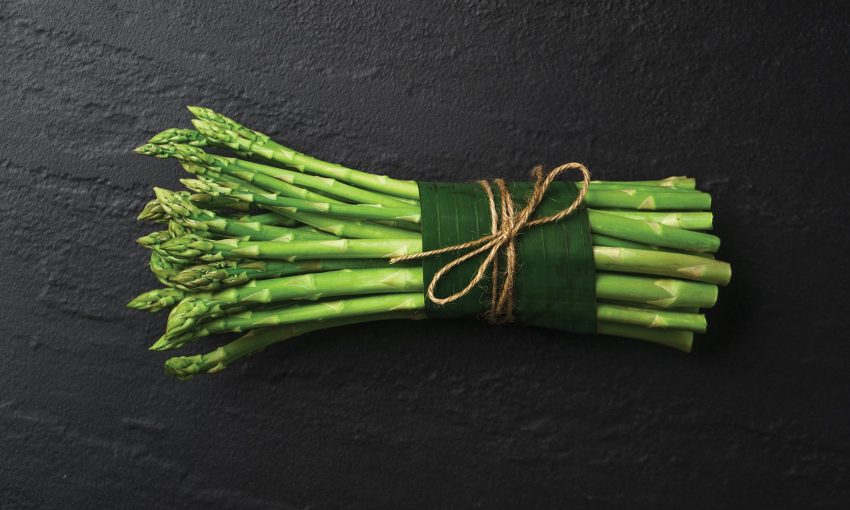Asparagus celebrates seasonality so well. Its relatively short harvest window is eagerly awaited by home gardeners keen to enjoy a taste sensation like few other vegetables.
Crowning glory
Asparagus is an herbaceous perennial growing from a tuberous root. The top emerges as edible spears pushing up through ground in spring. Once temperature increases, tips develop into ferny growth that billow and fill garden beds.
But before talking more about asparagus, we need to broach the “pee” word. Loved for its unique fine flavour, after consuming asparagus, some people detect, well… a certain odour in their urine. Suspected to be caused by the level of asparagusic acid present in this vegetable, the interesting thing about the “note” is not everyone produces the odour or can smell it. While some studies show odour production is gene related, the reason why others can and cannot detect the smell remains inconclusive. Now this subject has been covered, let’s move on…
Being dioecious, separate male and female plants can be identified with females bearing berries and males not. Male plants expend their energy into root and top development, so they produce more spears.
The late-autumn and winter months see the ferny tops die back and so this is the time to cut off remaining growth to ground level and remove any weeds. Come spring the asparagus spears appear and the cycle continues. Well maintained asparagus plants can remain productive for decades.
Winter is the time for planting out dormant asparagus crowns, available from your local garden centre. An alternative to planting winter asparagus crown is having a go at raising asparagus from seed in spring and planting out once they’ve sprouted.
What asparagus plants want is sun and fertile soil, what they don’t like is wet feet, so pick a spot that receives at least a half day of sun, is well drained and has loads of well-aged organics dug in. The more crowns you plant the more spears you’ll harvest. Dig a trench and lay crowns over a small mound to spread the roots, allow about 50-centimetre spacings between each. Backfill so soil just covers the crown top and water in. Winter rain keeps the ground moist.
Keep an eye out for weeds, they compete with your asparagus plants for moisture and nutrient.
Extra handfuls of blood and bone, Dynamic Lifter, Rapid Raiser or other organic-based fertilisers every month or so from later winter through to mid-autumn, coupled with additions of compost and manure now and again, goes a long way in keeping plants happy.
Asparagus grows well in containers. One crown per large pot gives enough space to be productive. Tip out and divide once the underground tuber becomes pot bound and loses vigour.
As soil warms and crowns sprout, the joy of nature is on show when little green tips begin to break through the bare earth. Like pointing fingers, asparagus spears push upward from the ground creating a most unusual sight.
What can only be described as cruel, leave spears from newly planted asparagus crowns unpicked for the first two seasons. Resisting the temptation to snap off those delicious-looking spears now, allows the plants to sprout, grow and strengthen. You will reap the benefits of that abstinence come year three and beyond.
Once your asparagus is at picking age, a quick harvest is needed, because spears appear and reach their mature height in a day or so. The warmer the weather, the more they emerge.
Visiting your asparagus patch every few days ensures spears are cut fresh and crisp, not left to go woody. Use a knife or scissors and cut each spear just below ground level. Depending on plant maturity and temperature, picking can last between five and eight weeks. Once the weather warms spear production ceases, replaced with quick developing ferny growth.
If you want to grow white asparagus, be prepared for some additional work. Not a different variety, traditional green asparagus is turned white by continuing to mound soil around emerging growing tips and maturing spears; blocking the light stops chlorophyll production, leaving the stems with a bleached look.
Purple asparagus varieties such as “Sweet Purple” add a wonderful colour addition to the veggie patch. If looking to keep that colour in your dishes use fresh as, disappointingly, cooking turns the spears green.
Enjoy your homegrown asparagus fresh, baked, boiled, steamed, fried or barbequed. It’s delicious every way.

Easy Asparagus
When cooking asparagus, keeping it simple produces flavoursome results.
Ingredients
Handful (approx. 8) fresh asparagus spears
½ lemon
salt
pepper
butter
slice of sourdough bread
Method
Check each spear base, if woody trim off. Add 5 centimetres of water to a saucepan or skillet. Bring to boil on high heat. Place spears so they are covered. Thin spears take around 2 to 3 minutes to cook, while thick spears will need 4 to 5 minutes. Remove and quickly rinse in cold water to halt cooking, then lay on a plate. Squeeze over lemon, a dob of butter and sprinkle salt and pepper to taste.
Add a toasted slice of sourdough bread and enjoy.
This article first appeared in the Winter 2023 issue of SALIFE Gardens & Outdoor Living magazine.



